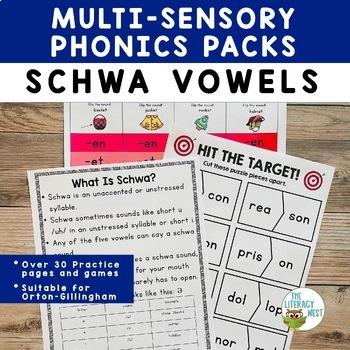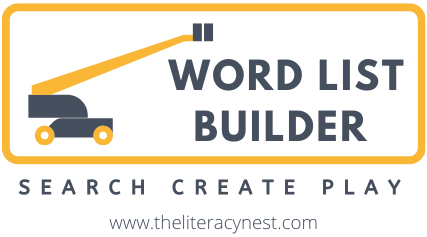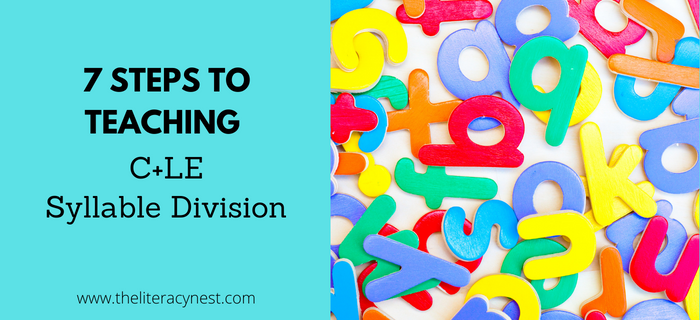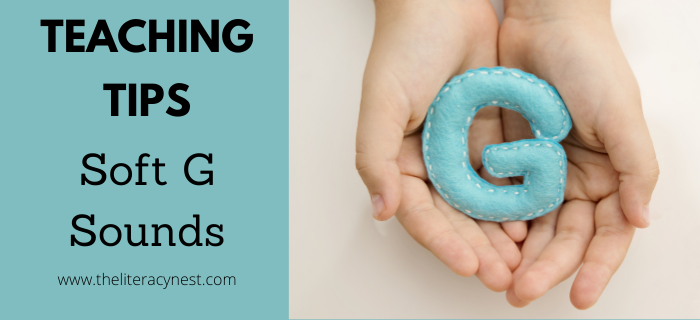How to Teach Schwa Vowels Part 2: Tips for Teaching Other Schwa Vowels
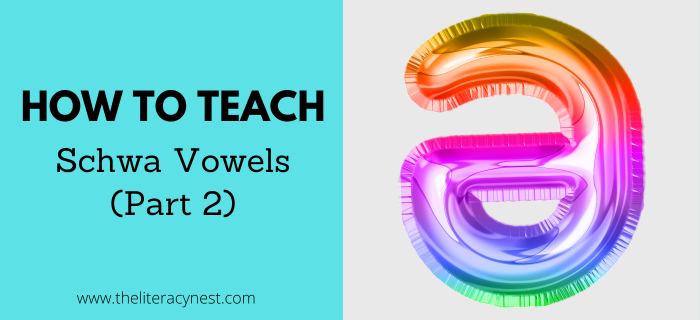
In Part 1 of How To Teach Schwa Vowels, we talked about strategies for learning schwa a. Schwa a is a great place to introduce the schwa vowel because it is predictable in its location and spelling. In addition, this post offers a lot of suggestions about teaching children about accent and stress which is a necessary prerequisite for learning schwa.
Let’s review some foundational concepts about the schwa sound:
- Schwa is the sound a vowel makes in an unaccented syllable. It is a lazy vowel.
- The symbol for schwa looks like an upside-down e.
- Schwa typically sounds like uh or ih or something in between.
- Schwa can be spelled with any of the vowels, which makes spelling the challenge.
- Just as students mark short vowels with a breve and long vowels with a macron, it can be helpful to mark schwa vowels with the schwa symbol or accented syllables with the ‘ symbol.

Tips for How to Teach Schwa Vowels
Teaching students to hear accented syllables is a very difficult thing for many students. English is a stress-timed language that forms the basis for the rhythm or meter. While we don’t need to teach students about the intricacies of poetic meter, it is helpful to teach them about how to hear stressed and unstressed syllables. Using hands-on multisensory techniques for this is key.
Call The Dog
There is a trick called “Call the dog” or “Call to Dinner.” When you call out a person’s or animal’s name, you can hear the accent syllable clearly. Your voice is higher pitch and louder. Pretending a given word is someone you are calling to dinner allows you to more easily hear which syllable you naturally stress. It’s possible to overthink this and become confused, but typically trying a word both ways makes it easier to hear which is correct.
It can be helpful to use felt squares or magnetic letters and move the unaccented syllable down, like the pitch of your voice and volume, for the unaccented syllable.
It can also be helpful when teaching about accent to teach students about words that change accent depending on their usage. For example, the word content. The man was content to relax in the hammock.

Depending on the usage of the word content, the accent shifts. This can be a helpful way to demonstrate and hear accent for a student who is having difficulty.
Crazy I
After schwa a, typically the next easiest schwa spelling to teach is what is sometimes referred to as “crazy I”. This is the short I sound you hear in the middle of words like president. It is another open syllable exception. In the middle of a long word (typically 3 or more syllables), an open syllable I will often make its short sound. Usually, if you hear more of an “uh” sound in the middle, that schwa sound is spelled differently, probably with an a. Examples of the “crazy I” include words such as:
dignity
hesitate
animal
complicate
The syllable divisions for spelling are debatable. Some would insist that the I is actually part of a closed syllable. The crazy I appears as an open syllable according to how a word is pronounced.
After Crazy I, I will typically teach children that while we can’t be 100% sure of how a schwa sound is spelled, there are some common patterns that can be helpful. For example, schwa spellings often follow these spelling patterns:
-on as in button
-en as in mitten
-op as in gallop
-om as in bottom
-et as in helmet
-al as in animal
Using words with these common spelling patterns for schwa, identifying and highlighting those patterns, reading controlled text, and playing games that offer the opportunity to both read and spell these patterns will make them much more automatic. Repetition and review are key to students developing a facility with these spelling patterns.

Spelling Pronunciation
When learning to spell a particular word, it can be helpful to use a “spelling pronunciation”. Pronouncing the word a bit differently than speaking in order to facilitate spelling. For example, many children learning to spell the state name Connecticut will learn to spell Connect, I, cut. A similar strategy can be used for spelling an important word with a difficult-to-remember schwa spelling.
In addition to shifting accents being helpful for learning about accent, they can also be valuable tools in spelling. Often times a word with a schwa may produce a clear vowel sound for that syllable in a different form. For example, with the two ways of pronouncing content mentioned earlier, the e in the second syllable is clearly identifiable in the pronunciation of, The content of the lecture was fascinating.
In a similar way using derivatives of a particular word can also shed some light on those tricky schwa spellings. The word human becomes much easier to spell if you think of the related word humanity or legal as legality. The schwa in the middle of composition becomes much clearer in the word compose.
Schwa’s Cousin: The Scribal o
There is one more easily identified category of schwa or schwa-like vowels. This is sometimes known as the scribal o. The scribal o has a story that is a little different from other schwa vowels. To explain this to students, it is important for them to understand that before the printing press, all books and documents were written by people who knew how to read and write and whose job it was to make copies of texts. These people were known as scribes.
This is a great opportunity to link in morphology and the Latin root scrib/script. During this time period when things were written by hand everything was written in script or cursive and writing looked a little different than it does now.
Scribes noticed that the letter u when it was followed by certain letters with lots of up and down strokes such as m, n, v, and th became really confusing and difficult to read. I will often demonstrate this for students on a whiteboard using cursive and a common word spelling with u instead of o. To make this easier for themselves and for the reader, scribes began to substitute o for the u in these words. This accounts for the schwa-like sound in single-syllable words such as love and come and for the schwa-like sound in accented syllables such as mother and brother.
Please note:
There is no easy magic spell for mastering the spelling of the schwa sound. Accuracy comes with practice, an understanding of morphology and the history of English, and a development of general orthographic competency. Students should recognize the challenges inherent in spelling schwa and learn to utilize tools to assist them such as spell checkers.
Schwa Sound Spelling Activities
Schwa sounds can be challenging for students, but this phonics pack has everything you need to use a multisensory approach to teach Schwa for reading and spelling. It is suitable for Orton-Gillingham instruction and other reading interventions to encourage phonemic awareness.
You can grab this resource in The Literacy Nest Shop or on TpT!
If you are seeking resources, this Schwa A resource is so helpful. I also have a FREE schwa game with a fun pizza theme! Who doesn’t love pizza?
Are you looking for a list of Schwa vowel words? Word List Builder has got you covered!
Save time searching for Schwa vowel words! Create customized and meaningful review, build your folder of words, create templates and games, and much more in Word List Builder.


